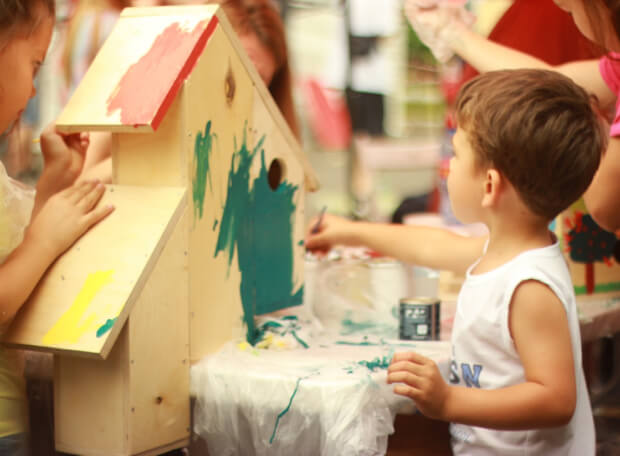Art and craft activities are not just fun pastimes for pre-schoolers; they are essential tools for nurturing creativity, imagination, and fine motor skills. Engaging in creative endeavors at a young age lays the foundation for a lifelong love of self-expression and artistic exploration.
**1. Encouraging Self-Expression:
- Art allows pre-schoolers to communicate and express themselves in a non-verbal way. Through colors, shapes, and forms, they convey their feelings, thoughts, and ideas, fostering a sense of self-awareness and confidence.
**2. Developing Fine Motor Skills:
- Holding a paintbrush, cutting with scissors, and manipulating small art materials all require fine motor control. These activities help refine hand-eye coordination and dexterity, setting the stage for more complex tasks like writing.
**3. Boosting Problem-Solving Skills:
- Art often involves making choices, experimenting with materials, and finding creative solutions. When a child decides which colors to use or how to arrange shapes, they’re engaging in problem-solving and critical thinking.
**4. Enhancing Visual-Spatial Awareness:
- Creating art encourages pre-schoolers to think about spatial relationships, proportions, and composition. This spatial awareness is valuable in many areas, including mathematics and architecture.
**5. Fostering a Sense of Achievement:
- Completing an art project provides a sense of accomplishment and pride. It boosts a child’s self-esteem and motivates them to take on more challenging creative tasks.
**6. Stimulating Imagination and Creativity:
- Art and craft activities open up a world of imaginative possibilities. Whether it’s painting a fantastical creature or building a spaceship from recycled materials, children learn to think outside the box and imagine new worlds.
**7. Encouraging Process-Oriented Thinking:
- In art, there’s no one “right” way to do things. Pre-schoolers learn to value the process of creating rather than focusing solely on the end result. This promotes a healthy attitude towards experimentation and learning from mistakes.
**8. Promoting Sensory Exploration:
- Engaging with different art materials offers a sensory-rich experience. Children explore the textures, colors, and properties of various materials, stimulating their senses and creativity.
**9. Fostering Cultural Awareness:
- Art allows children to explore and appreciate different cultures and traditions. They can create art inspired by diverse artistic styles, introducing them to a global perspective.
**10. Building a Foundation for Future Learning:
- Early exposure to art sets the stage for future academic success. It encourages a love for learning, curiosity, and a willingness to explore new ideas.

